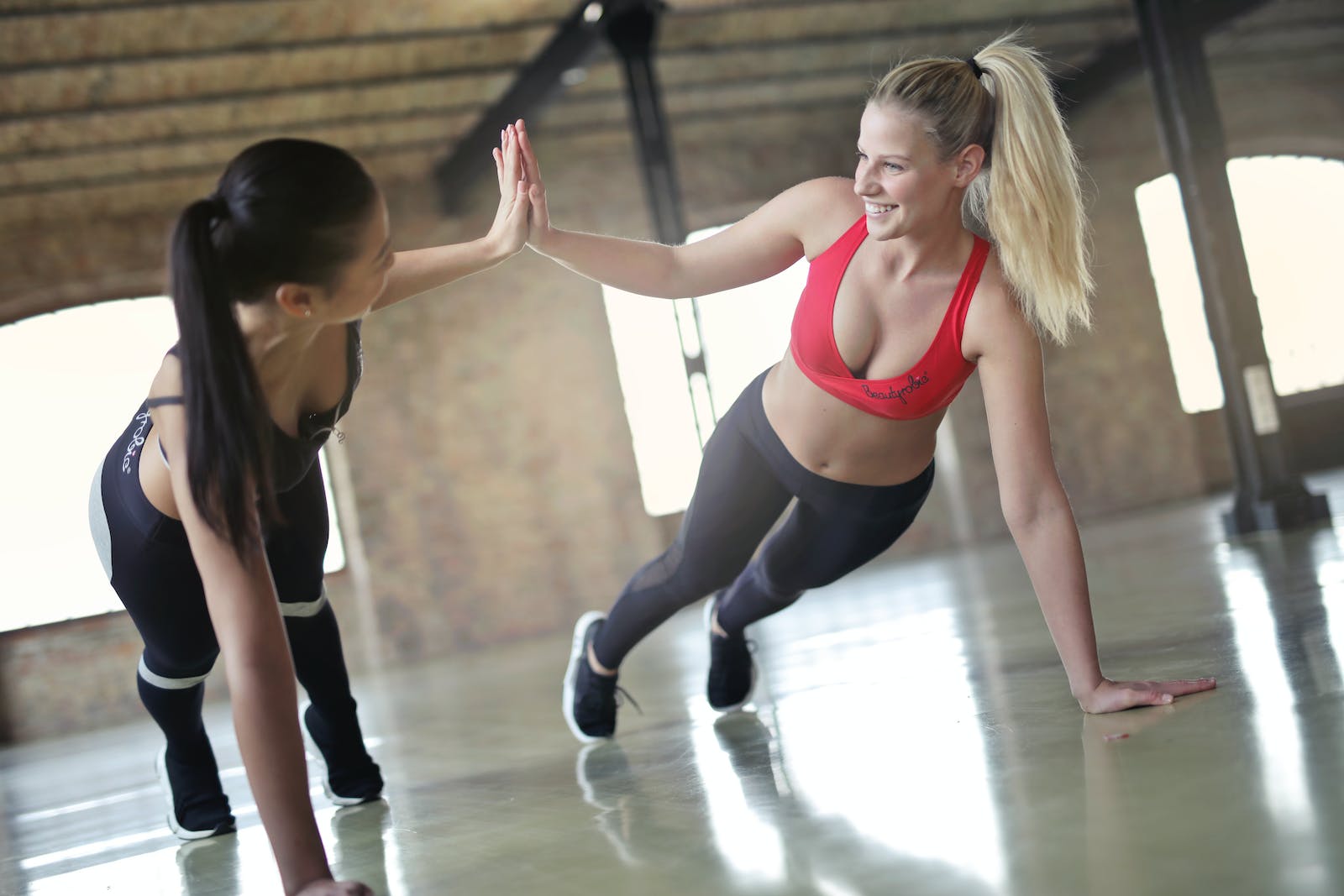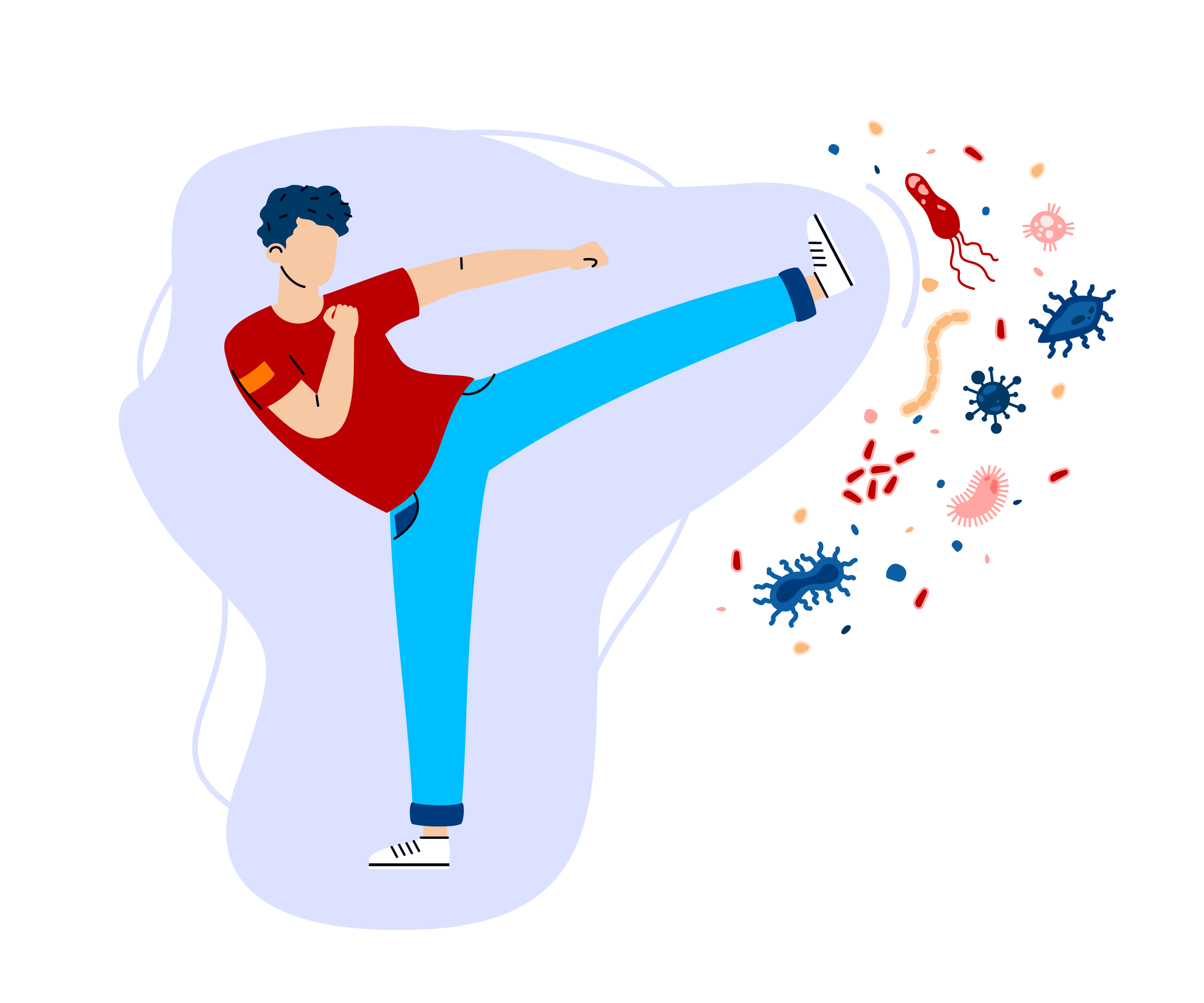
Regaining your strength and getting back into fitness after you’ve been sick for awhile isn’t always easy. For example, if you were sick with COVID and your symptoms were on the more severe side, you might have been in bed for a week, losing strength. You may have fallen off the fitness wagon.
The recent global outbreak of COVID-19 has affected all aspects of society, with healthcare systems across the globe buckling under pressure, and economies coming to a standstill as supply chains are placed on lockdown. Over the passing months, this virus has mutated into different variants, each with varying symptoms and degrees of intensity. In most cases, individuals diagnosed with COVID experience mild to severe flu-like symptoms. They could suffer from a fever, body aches, chills, weakness, fatigue, headaches, sore throat, cough, congestion, runny nose and sinus or facial pain. As a result, the medical community recommends that individuals battling the virus must rest and avoid strenuous activities that could potentially worsen their condition.
As mentioned, some people feel so sick and weak that they’re bed-ridden for 5 – 10 days while battling COVID. When you’re not being active every day anymore because you’re sick, it’s normal to lose strength. Regaining your strength and getting back on the fitness train is possible, as long as you go about it the right way.
Regaining Your Strength after COVID: What is the Recovery Process Like?
Going through the ropes of healing from a virus undoubtedly leaves the body weaker. Research indicates that it takes two weeks for the body to get over a mild or moderate case of this virus. This recovery process is protracted for those who experienced severe symptoms that need hospitalization. In these cases, it could take 6 weeks or even longer, especially for those that had to deal with intubation. Moreover, recovery varies for different people based on their age and overall health.
Dr. Marie Schaefer shares that the coronavirus can affect everyone differently, including athletes and healthy individuals. They are not exempted from having a severe case with long-term damage, that’s why it’s vital to recover gradually and not rush into getting back into an intense fitness program. Some may even experience lingering symptoms such as shortness of breath, fatigue, loss of stamina, and muscle aches.
If you ascribed to an active lifestyle pre-covid, it is understandable that you want to jump right back in on the fitness wagon after being cleared of the virus because you don’t want to lose your momentum. However, keep in mind that after long periods of rest and recovery, exercise cannot be done too abruptly or you risk injuring your health further. Here are ways to slowly ease back into a healthy and active lifestyle post-COVID-19.

1. Gradually Ease Back into Your Fitness Routine
It is important to realize that the body undergoes immense stress when sick or fighting off a virus. Immediately going back to the old fitness routines you had before contracting COVID-19, regardless if you lived an extremely active lifestyle, will only stress your system out more. This can leave you feeling weaker, and further delay your recovery plans. Regaining your strength is going to be successful if you don’t push yourself or try to do too much, too soon.
Instead, ease back into exercise. Ease back into your usual active habits with the clearance of your doctor. If you do personal training, for example, tell your trainer you can’t train as intensely as usual for the next couple of sessions. Start small, keep it slow, and make it steady. This is especially important for cases where the patient has been bed-ridden for weeks, as muscle atrophy may have occurred.
If, before COVID-19 you were running 5 kilometers every weekday, you can’t expect your body to bounce back instantly and run the same distance in the same space. After your illness, you could start by doing a daily 15-minute slow walk. As the days go by, you can gradually increase the intensity by lengthening the time and pushing yourself a little bit harder. You can then level up your moves by brisk walking, then slow jogging, until you are eventually back in full running form. The key post-recovery is to not overdo it.
2. Adopt the 25-50% Principle When Making an Effort
In relation to easing back into your routine, you may adopt the 25-50% principle. This means jump-starting your return to fitness by placing 25% to 50% of effort into your workouts instead of gearing up for maximum performance. After one week of training within the 25% to 50% range, you can take it up a notch in increments of 10% to 15% in the succeeding weeks until you feel that your body is well enough to perform at its 100% best.
To illustrate, if you are used to deadlifting weights of 150 pounds, you’ll want to reduce the weight if it’s your first time doing deadlifts since you’ve been sick, and you’ll also want to reduce the reps. You can then increase the number of repetitions and increase the weight as the days go by and as your body becomes more conditioned. It would also help to monitor your heart rate as you engage in your activities. Patience is critical during this period, so don’t rush things and remind yourself that there’s no competition. Your goal is to get back on track.
Moreover, keep in mind that not all training days are alike. Recovery is a bumpy road, and you may find yourself feeling weaker on more days than others. If this is the case, do not hesitate to reduce the amount of effort that you are putting into your workout. If 50% still feels too much, take things down to 30% or 25%. If you still feel too weak, bring it down to 10%. It may not seem like much, but any movement is still movement. Moreover, little efforts will compound to strengthen your health and build your endurance as the days pass. Regaining your strength is more effective when you go slow.
3. Listen to Your Body
Your return-to-fitness journey entails listening to your body. The best indicator of how your recovery is going is the way you feel. After being ill, it’s normal not to feel great or as strong right away, even if your illness has now passed. You will have days where you feel lethargic as your body adjusts, while you’re regaining your strength. Do not fail to heed the signs your body needs you to go slow, such as fatigue, soreness, dizziness and weakness. Remember that your body is in healing mode and is building up your immune system right after COVID, so your health won’t be restored overnight.
Moreover, progress is not linear, and your body may not get progressively better. You may encounter moments where you suddenly experience fatigue or a headache, like for cases of long COVID-19 where symptoms may still linger despite testing negative. Take them as your body’s cues to rest.
If you’re feeling impatient, just imagine that your body is a car that has just come back from the repair shop. You won’t immediately take it on a 16-hour road trip. Instead, you’ll keep tabs on warning signs, as sometimes, mechanical issues take more than one car check-up to fix. Similarly, if you find that one day you feel considerably tired and your body is in pain, despite having been able to power through a workout for the few days prior, rest and take a break. There’s no shame in resting because rest is part of every fitness program and it’s essential to a full recovery.

4. Eat Right and Keep Yourself Very Hydrated
Getting back on track with a healthy and active lifestyle means fueling your body with the right nutrients. You need a balanced diet so your body can strengthen and sustain itself throughout your routines. If you’re feeling particularly sluggish, ask your doctor for advice about taking the proper supplements to help fill nutrient gaps. Moreover, you cannot expect yourself to complete a workout routine, like CrossFit, off the bat without providing yourself the proper fuel. Make sure to load up on proteins, whole grains, fruits, and veggies.
Avoid consuming processed foods that are rich in additives as they can tax your organs. These can be particularly detrimental during recovery periods as they are loaded with sodium and preservatives but low in nutritional value. Additionally, load up on fluids. With any form of congestion and fever, it is normal for the body to lose a lot of water. Hence, you need to drink even more water and religiously replenish your electrolytes if you plan on easing back into your exercise routine. Hydration is an essential part of the recovery process since the body is made up of 60% water.
5. Look After Your Mental Health
An approach to overall wellness should include taking care of your mental health. Going through COVID-19 and the recovery process is not only tough on your physical body, but it also takes its toll on your mental health. A long period of quarantine and rest may not seem like much, but the isolation is harsh and emotionally draining. It’s as if the days drag on, making you feel even more lonesome.
Even if you are isolated with sick family members, not being able to go out and do the things that you enjoy could make you feel depressed. As an active person, you may feel frustrated when your body fails you. There is also the feeling of guilt over the potential fear of having passed the virus over to another loved one. Know that you are not at fault and that you are not alone.
As you ease back to a normal life post-illness, look out for your mental health. After having recovered from the coronavirus, do stress-relieving activities that make you happy which you have been deprived of doing during quarantine. It can be something as simple as going on a walk, cooking your favorite meal, or getting a massage. Do what makes you feel good because mental health care is part and parcel of your overall wellness.
Remember that it won’t be long before you’re back in full swing; back into your usual fitness routine. Don’t rush it, and allow yourself a few weeks to reclaim your strength.






